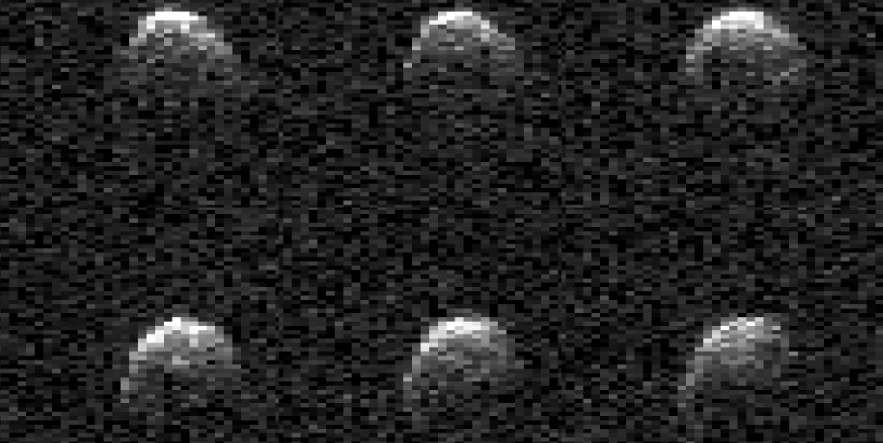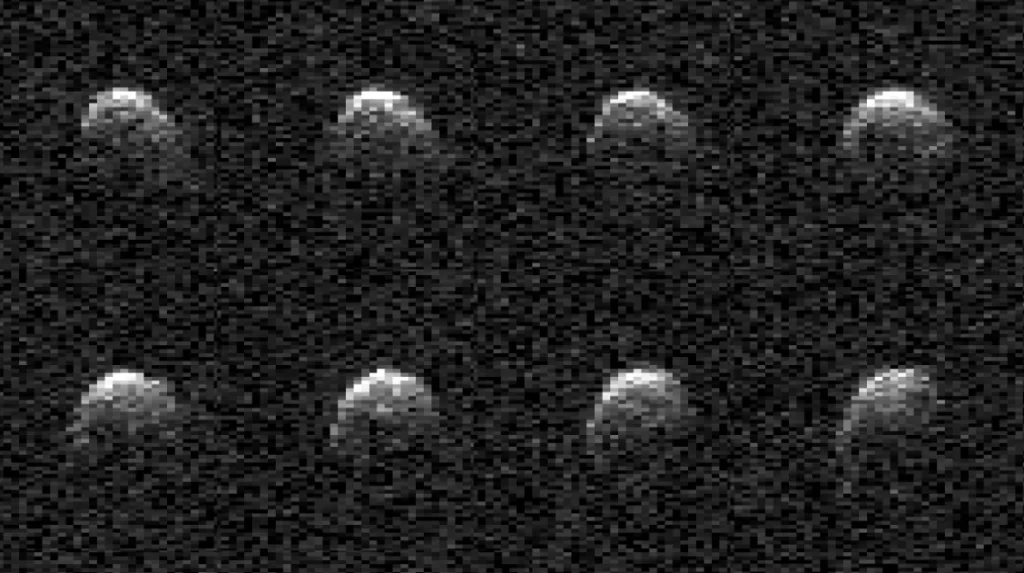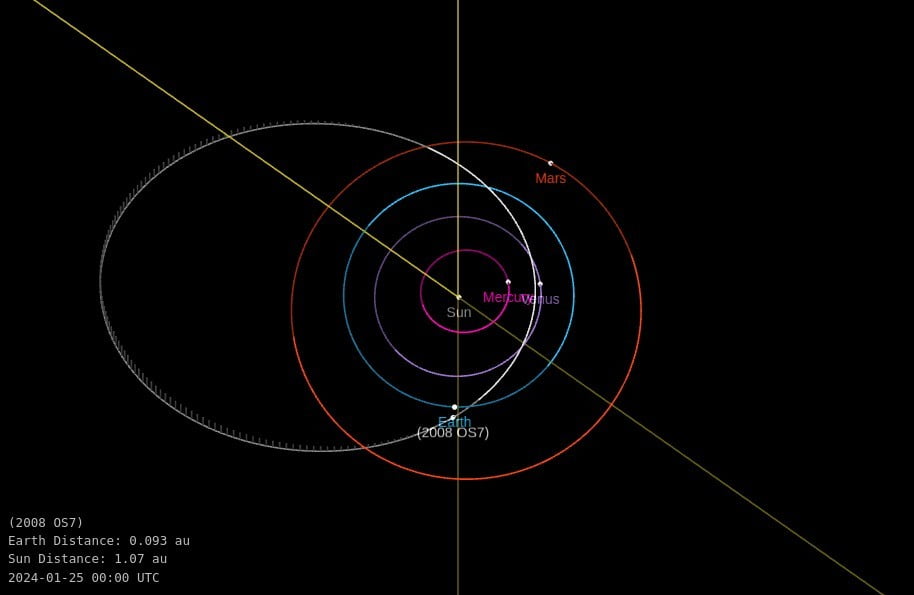First detailed images of near-Earth asteroid 2008 OS7

On February 2, 2024, NASA utilized the Deep Space Network’s Goldstone Solar System Radar to capture the first detailed images of asteroid 2008 OS7 during its close approach to Earth. The asteroid, measuring between 150 to 200 m (500 – 650 feet) wide, passed at a safe distance of approximately 2.9 million km (1.8 million miles), allowing scientists to refine its size, rotation, and orbital path, improving predictions of its future trajectories.
This flyby marked the first opportunity for NASA’s planetary radar to obtain detailed images of this near-Earth object (NEO), which had previously been too distant for such detailed analysis.
The asteroid was first identified on July 30, 2008, by the Catalina Sky Survey, funded by NASA and based at the University of Arizona, Tucson. Initial observations had estimated its width to be between 200 and 500 m (650 to 1 640 feet), with a notably slow rotation period of 29 ½ hours, determined by Petr Pravec from the Astronomical Institute of the Czech Academy of Sciences.
Utilizing the 70 m (230 foot) wide Goldstone Solar System Radar dish, part of the Deep Space Network near Barstow, California, JPL’s radar group was able to gather unprecedented data on 2008 OS7.

The images revealed a surface characterized by both rounded and angular regions, including a small concavity, determined the asteroid is smaller than previously estimated – about 150 to 200 m (500 to 650 feet) wide, and confirmed its uncommonly slow rotation.

These observations are crucial for understanding the asteroid’s physical characteristics and for refining its orbital path around the Sun, which spans from within Venus’s orbit to beyond Mars’s, completing a cycle every 2.6 years.
The data collected will aid NASA’s Center for Near Earth Object Studies (CNEOS) in improving predictions of 2008 OS7’s future trajectories and enhancing our preparedness for potential asteroid threats.
References:
1 NASA’s Planetary Radar Images Slowly Spinning Asteroid – NASA/JPL – February 26, 2024
Featured image credit: NASA/JPL

Commenting rules and guidelines
We value the thoughts and opinions of our readers and welcome healthy discussions on our website. In order to maintain a respectful and positive community, we ask that all commenters follow these rules.